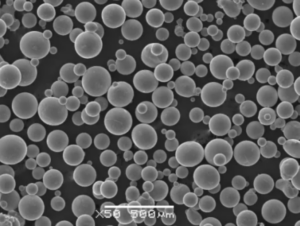Visión general
Prensado isostático en caliente (HIP) es un proceso de fabricación utilizado para reducir la porosidad de los metales y mejorar sus propiedades mecánicas y su trabajabilidad. Este proceso consiste en aplicar alta temperatura y alta presión uniformemente alrededor del metal, normalmente utilizando un gas inerte como el argón. El HIP se utiliza ampliamente en varias industrias, como la aeroespacial, la automovilística, la médica y la energética, debido a su capacidad para producir componentes con mayor fuerza, densidad y resistencia a la fatiga.
Tabla de polvos metálicos utilizados en el HIP
| Polvo metálico | Composición | Propiedades | Caracteristicas |
|---|---|---|---|
| Ti-6Al-4V | Aleación de titanio con 6% Al y 4% V | Alta resistencia, ligereza, resistencia a la corrosión, excelente biocompatibilidad | Comúnmente utilizado en implantes aeroespaciales y médicos, conocido por su excelente relación resistencia-peso. |
| Inconel 718 | Aleación de níquel-cromo | Alta resistencia, excelente resistencia a la oxidación y a la corrosión a altas temperaturas | Ampliamente utilizado en turbinas de gas, aeronáutica y reactores nucleares debido a sus propiedades superiores a altas temperaturas. |
| Acero inoxidable 17-4 PH | Acero inoxidable martensítico endurecido por precipitación | Alta resistencia, buena resistencia a la corrosión, fácil de mecanizar | Utilizado en las industrias aeroespacial, química y petroquímica |
| AlSi10Mg | Aleación de aluminio con 10% Si y 0,5% Mg | Ligero, buena conductividad térmica, resistente a la corrosión | Ideal para aplicaciones de automoción y aeroespaciales que requieren componentes ligeros y resistentes |
| CoCrMo | Aleación de cobalto, cromo y molibdeno | Alta resistencia al desgaste, buena biocompatibilidad | Comúnmente utilizado en implantes médicos y aplicaciones dentales |
| Acero para herramientas H13 | Acero al cromo-molibdeno para trabajos en caliente | Gran tenacidad, buena resistencia a la fatiga térmica | Se utiliza en aplicaciones de fundición a presión, extrusión y forja |
| Acero inoxidable 316L | Acero inoxidable austenítico | Excelente resistencia a la corrosión, buena soldabilidad | De uso común en aplicaciones marinas, médicas y de procesamiento de alimentos. |
| Ti-5553 | Aleación de titanio con 5% Al, 5% V, 5% Mo, 3% Cr | Alta resistencia, buena resistencia a la fluencia, peso ligero | Se utiliza en aplicaciones aeroespaciales y de automoción de alto rendimiento |
| Acero martensítico envejecido | Acero al hierro-níquel de bajo contenido en carbono | Muy alta resistencia, buena tenacidad, fácil de mecanizar | Se utiliza a menudo en herramientas, en la industria aeroespacial y en aplicaciones sometidas a grandes esfuerzos. |
| MP35N | Aleación de níquel, cobalto, cromo y molibdeno | Excelente solidez, resistencia a la corrosión y biocompatibilidad | Se utiliza en aplicaciones médicas, aeroespaciales y submarinas en las que la solidez y la resistencia a la corrosión son fundamentales. |
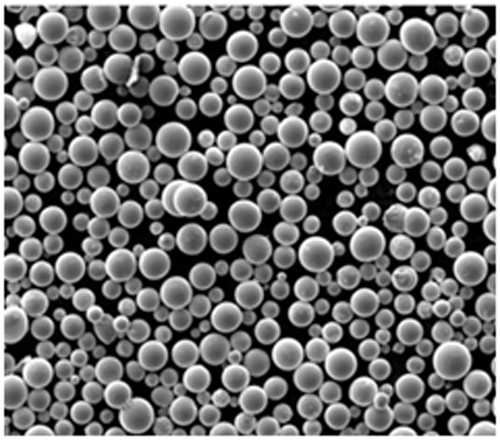
Composición del prensado isostático en caliente (HIP)
La composición de los materiales utilizados en la HIP varía en función de la aplicación específica y las propiedades deseadas del producto final. Entre los polvos metálicos más utilizados en HIP se encuentran las aleaciones de titanio, las superaleaciones con base de níquel, los aceros inoxidables y los aceros para herramientas. Cada uno de estos materiales ofrece características únicas que los hacen adecuados para diferentes aplicaciones industriales.
Propiedades y características de Prensado isostático en caliente (HIP)
El prensado isostático en caliente ofrece numerosas ventajas, como la mejora de las propiedades mecánicas, el aumento de la densidad y la reducción de la porosidad. Estas características se traducen en componentes de mayor solidez, resistencia a la fatiga y durabilidad general. A continuación se muestra una tabla detallada que resume las propiedades y características de los materiales HIP.
| Propiedad | Descripción |
|---|---|
| Densidad | El HIP reduce significativamente la porosidad, lo que da lugar a componentes de mayor densidad |
| Fuerza | El proceso mejora la resistencia mecánica del material |
| Resistencia a la fatiga | Mayor resistencia a la fatiga y a las cargas cíclicas |
| Dureza | Mayor tenacidad gracias a la aplicación uniforme de presión |
| Resistencia a la corrosión | Ciertas aleaciones utilizadas en HIP presentan una excelente resistencia a la corrosión |
| Biocompatibilidad | Materiales como el Ti-6Al-4V y el CoCrMo son biocompatibles, por lo que son adecuados para implantes médicos. |
| Conductividad térmica | Algunos materiales HIP, como AlSi10Mg, ofrecen una buena conductividad térmica |
| Resistencia al desgaste | Aleaciones como el CoCrMo y el acero para herramientas H13 proporcionan una gran resistencia al desgaste, esencial para herramientas y aplicaciones médicas. |
Aplicaciones del prensado isostático en caliente (HIP)
El HIP se utiliza en una gran variedad de aplicaciones de distintos sectores. Su capacidad para producir componentes con propiedades mecánicas superiores lo convierte en un proceso inestimable en sectores críticos. En la tabla siguiente se describen algunas aplicaciones comunes del HIP.
| Industria | Solicitud |
|---|---|
| Aeroespacial | Componentes de motores a reacción, álabes de turbina, piezas estructurales |
| Automotor | Piezas de motor, componentes de transmisión, estructuras ligeras |
| Médico | Implantes (cadera, rodilla, dentales), instrumental quirúrgico |
| Energía | Componentes de reactores nucleares, turbinas de gas |
| Herramientas | Moldes de fundición a presión, matrices de extrusión, herramientas de forja |
| Petróleo y gas | Componentes submarinos, herramientas de perforación |
| Defensa | Blindaje, componentes de armas |
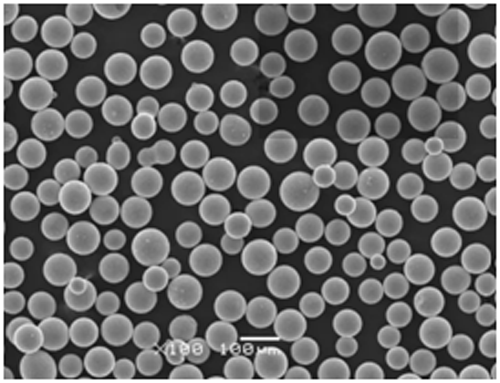


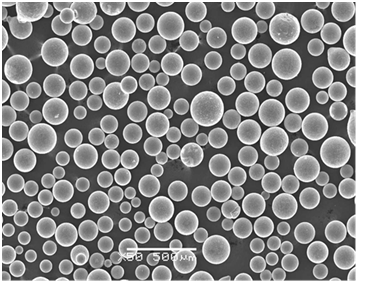
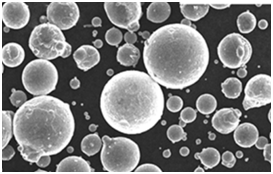

Especificaciones, tamaños, calidades y normas de HIP
Las especificaciones y normas de los materiales HIP varían en función de la industria y la aplicación. A continuación se muestra una tabla que proporciona una visión general de las especificaciones, tamaños, grados y normas comunes asociados con HIP.
| Material | Especificaciones | Tallas | Los grados | Normas |
|---|---|---|---|---|
| Ti-6Al-4V | ASTM B348, AMS 4928 | Diámetro: 10-500 mm | 5º curso | ASTM, AMS |
| Inconel 718 | AMS 5662, ASTM B637 | Diámetro: 6-400 mm | UNS N07718 | ASTM, AMS |
| Acero inoxidable 17-4 PH | ASTM A564, AMS 5643 | Diámetro: 8-300 mm | Grado 630 | ASTM, AMS |
| AlSi10Mg | ISO 3522 | Diámetro: 5-250 mm | – | ISO |
| CoCrMo | ASTM F75, ISO 5832-12 | Diámetro: 4-150 mm | – | ASTM, ISO |
| Acero para herramientas H13 | ASTM A681, DIN 1.2344 | Diámetro: 10-500 mm | H13 | ASTM, DIN |
| Acero inoxidable 316L | ASTM A276, AMS 5648 | Diámetro: 6-300 mm | 316L | ASTM, AMS |
| Ti-5553 | AMS 4991 | Diámetro: 8-200 mm | Grado 5553 | AMS |
| Acero martensítico envejecido | AMS 6514 | Diámetro: 10-300 mm | Grado 250, 300 | AMS |
| MP35N | ASTM F562, AMS 5844 | Diámetro: 5-150 mm | – | ASTM, AMS |
Proveedores y precios
Al considerar el HIP para sus necesidades de fabricación, es esencial conocer a los proveedores y los detalles de los precios. En la tabla siguiente figuran algunos proveedores reputados y los precios aproximados de diversos materiales HIP.
| Proveedor | Material | Precio (por kg) |
|---|---|---|
| Tecnología Carpenter | Ti-6Al-4V | $150 |
| Metales especiales | Inconel 718 | $180 |
| Materiales Sandvik | Acero inoxidable 17-4 PH | $80 |
| ECKA Granulado | AlSi10Mg | $50 |
| ATI Metales | CoCrMo | $200 |
| Uddeholm | Acero para herramientas H13 | $70 |
| Outokumpu | Acero inoxidable 316L | $60 |
| TIMET | Ti-5553 | $170 |
| ArcelorMittal | Acero martensítico envejecido | $160 |
| Metales de Fort Wayne | MP35N | $250 |
Ventajas y limitaciones de la HIP
Aunque el HIP ofrece numerosos beneficios, es esencial comprender sus ventajas y limitaciones. En el siguiente cuadro se comparan los pros y los contras de la HIP.
| Ventajas | Limitaciones |
|---|---|
| Reduce la porosidad y mejora la densidad | Alto coste de equipamiento y funcionamiento |
| Mejora las propiedades mecánicas | Limitado a tamaños de material específicos |
| Aumenta la resistencia a la fatiga y a la corrosión | Largos plazos de tramitación |
| Aplicación uniforme de la presión | Requiere conocimientos especializados |
| Mejora la homogeneidad del material | No apto para todo tipo de materiales |
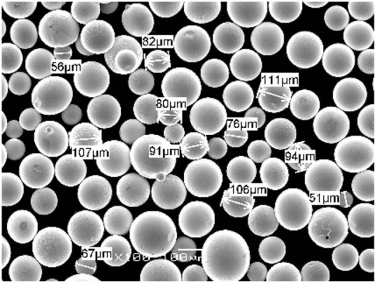
preguntas frecuentes
| Pregunta | Respuesta |
|---|---|
| ¿Qué es el prensado isostático en caliente (HIP)? | El HIP es un proceso de fabricación que aplica alta presión y temperatura a los materiales para mejorar sus propiedades. |
| ¿Cómo mejora el HIP las propiedades de los materiales? | El HIP reduce la porosidad, aumenta la densidad y mejora las propiedades mecánicas, como la solidez y la resistencia a la fatiga. |
| ¿Qué materiales se utilizan habitualmente en la HIP? | Los materiales más comunes son las aleaciones de titanio, las superaleaciones con base de níquel, los aceros inoxidables y los aceros para herramientas. |
| ¿Existen limitaciones en el uso del HIP? | Sí, el HIP puede ser caro, tiene tiempos de procesamiento largos y está limitado a determinados tamaños y tipos de material. |
| ¿Qué sectores utilizan el HIP? | El HIP se utiliza en las industrias aeroespacial, de automoción, médica, energética, de herramientas, de petróleo y gas, y de defensa. |
| ¿Cuáles son las ventajas del HIP? | Entre sus ventajas se incluyen la mejora de la densidad, la solidez, la resistencia a la fatiga y la homogeneidad general del material. |
| ¿Es el HIP adecuado para todos los materiales? | No, el HIP no es adecuado para todos los materiales. Funciona mejor con determinadas aleaciones y metales. |
| ¿Cómo afecta el PIF al coste de producción? | La HIP puede aumentar los costes de producción debido al costoso equipo y a los gastos operativos que conlleva. |

